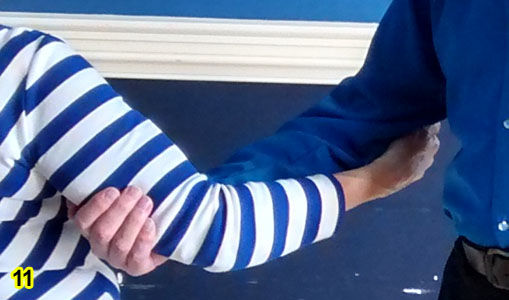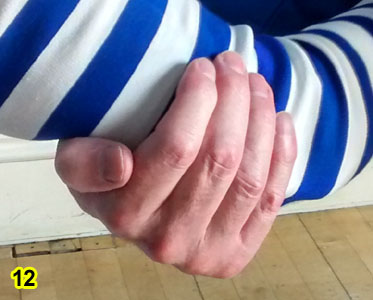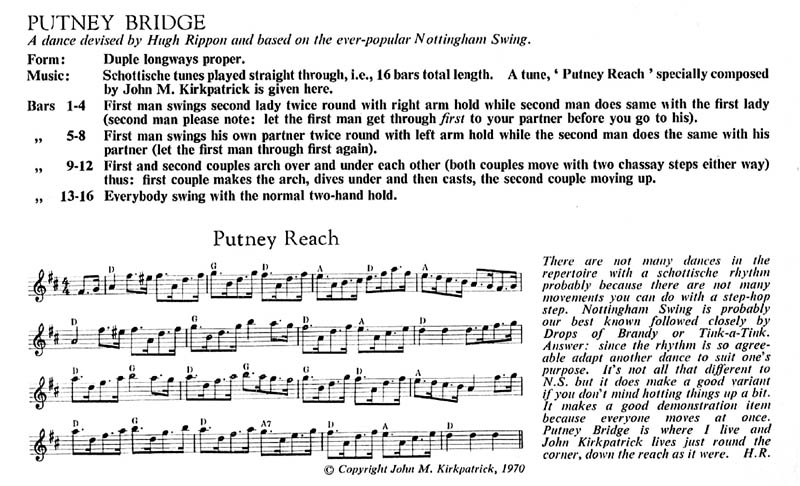Nottingham Swing
Source: Collected in Northamptonshire; published in Community Dances Manual 2, 1949Formation: Longways; Duple Minor; First Couples Improper
| A | First Corners Right Arm Turn x2 Second Corners Right Arm Turn x2 |
| B | #1s Lead Down and Back (double step)
#1s Cast down one place WHILE #2s Move Up Partner Swing |
Music:
Any suitable 16-bar Hornpipe at around 80-90bpm. Notes:
Putney Bridge is a variant of Nottingham Swing.
In the CDM Hugh says, "The dance happened by chance one night in the early sixties in Wallington, Surrey". In the 1996 version he has made the set Improper so that the men no longer need to dash across the set, avoiding crashing into each other. Strangely, when publishing the dance in his book, nobody noticed that the change of formation meant that the words "(first man goes first)" were no longer necessary!
By 1996 Hugh had also dropped the arches and switched to the standard Nottingham Swing B. The Chassees Down and Up had replaced the original Lead Down and Back by the time I learnt Nottingham Swing in the late 1960s. The #2s doing Chassees in the opposite direction, on the outside, was also commonly done by experienced dancers.
The CDM wording for the Arming is, "First man swings second girl with the right elbow", while Hugh says,"with right arm hold". I was taught to do it as descibed below and that is how I have seen most experienced dancers doing it. It is by far the most satisfying connection for fast turning with a Hornpipe Step.
Forearm Hold with Cupped Elbow


Many Ceilidh dances such as Nottingham Swing use a Hornpipe Step (Step-Hop) at 80 to 90 bpm. When you are bouncing up and down you need a different type of connection. The standard hold for dances like this is to cup your partner's elbow. You get close together so your upper arm is almost vertical, place your forearms together, and gently hook your hand just above your partner's elbow. Note that the thumbs are with the fingers so that you don't grip. This is a great connection, allowing you, with a Hornpipe Step, to get around three times easily (although most dances just specify twice around)!
If you join your hooked left hands underneath then you also have a great ceilidh swing hold for the Hornpipe-Step Swings.
You can get a feel for how Nottingham Swing is danced in this video:
Original page from English Dance & Song, Summer 1970

Back to Dance Index
I'd love to hear from you if you know anything more about this dance, its composer, its style, or its history.
Feedback is very welcome on any aspect of these dances or Web pages.
Please contact John Sweeney with your comments.
